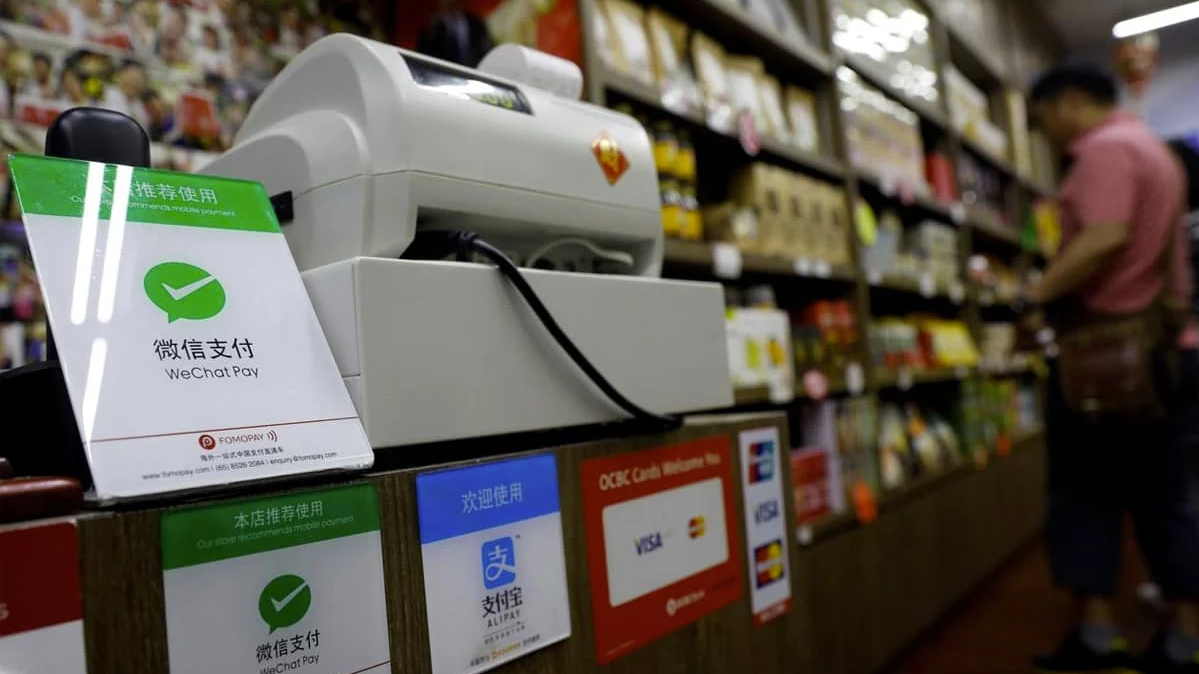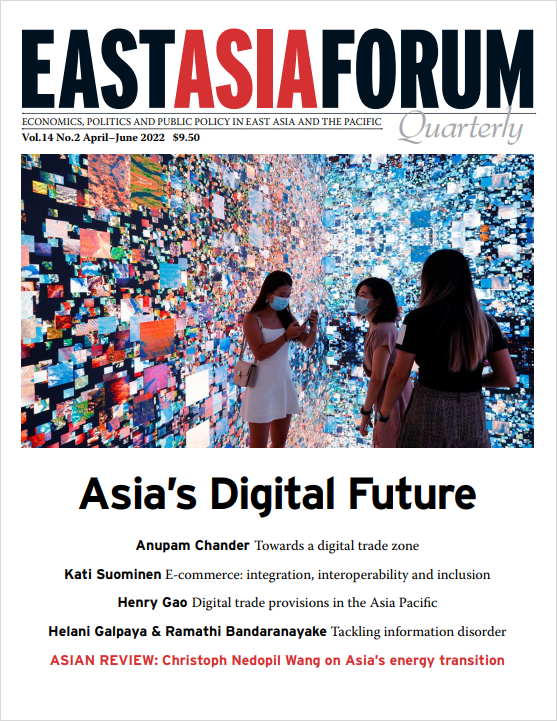Published 16 August 2022
East Asian governments have much work ahead of them to translate the region's rapid e-commerce adoption into digital trade opportunities for local firms and economies. Deeper integration of markets, implementation of commitments, and improved interoperability will all help small businesses to expand sales and enable more inclusive trade.
East Asia is in the midst of a historic e-commerce boom. Online transactions of goods and services grew rapidly during COVID-19 lockdowns, at 58% per annum in the Southeast Asian region alone in 2020. In 2022, the Philippines, Indonesia and Vietnam are expected to rank among the top five fastest growing e-commerce markets in the world. China remains the region’s largest business-to-consumer e-commerce market, with more than 50% of retail sales made online.
East Asia’s online buyers and sellers are buoyed by a vibrant ecosystem of digital trade services, such as e-commerce marketplaces, digital payment and fintech services, logistics platforms and so-called ‘super-apps’ that provide users with services including delivery, shopping and ride hailing.
Businesses are realizing the opportunity that e-commerce presents, mounting online stores and onboarding marketplaces to reach hundreds of millions of global buyers. In ASEAN countries two-thirds of micro and small firms use the online shopping platform Shopee, about half use Lazada, and over a quarter use Amazon. Midsize and larger firms are widely using global marketplaces like Amazon and Alibaba as well as direct-to-consumer platforms such as Shopify. This has translated to cross-border e-commerce and digital trade. More than 60% of microenterprises that sell on global online marketplaces now export, with half of them commencing export because of e-commerce. Online seller– exporters are also more likely than offline sellers to export to multiple ASEAN and extra-regional markets.
The surge in business-to-consumer e-commerce is paralleled by the strong growth of cross-border business-to-business e-commerce as business-sellers seek to create omnichannel experiences for business purchasing managers. Digitally deliverable business-to-business services exports are also growing, at 16% per annum between 2007 and 2020 in the ASEAN region alone, far exceeding the robust growth of the commercial services trade. As a result, the region’s digital service providers are more deeply integrated in Asian and global value chains.
The adoption of policies and practices by regional governments that are conducive to e-commerce—such as e-payment laws, e-export promotion programs and financing for online small and medium-sized enterprises— have further bolstered the e-commerce surge. Governments in the region have long pursued regional e-commerce workstreams in the context of ASEAN and APEC alongside pathbreaking free trade agreements that unite regional economies with extra regional partners to promote digital trade. Some of these include the US–Japan Digital Trade Agreement, the Comprehensive and Progressive Agreement for Trans-Pacific Partnership (CPTPP), the Singapore– Australia Digital Economy Agreement and the Digital Economy Partnership Agreement.
Governments across East Asia, however, have much work ahead of them to translate this wave of e-commerce adoption into digital trade opportunities for regional firms and economies. Over a third of Southeast Asian sellers report struggling with the region’s fragmented digital regulatory landscape. The complexity of national data privacy, consumer protection and other digital regulations are daunting to meet in just one market, let alone in multiple markets. Firms also worry about potential data localization undermining cross-border e-commerce. This is unsurprising with online seller–exporters widely using data on foreign customers and operations to upgrade services and streamline sales.
These obstacles point to the need for a clear regional policy agenda to promote digital trade. Regional economies need to promote greater convergence among national digital regulations to facilitate smaller firms’ compliance with national regulations in online markets. Further accessions of regional economies to the CPTPP and other trade agreements with binding e-commerce rules can promote regulatory convergence and lock each economy into standardized rules for digital trade. The intention of ASEAN economies to negotiate a Digital Economy Framework Agreement is a potentially positive step towards robust and binding rules that promote e-commerce.
East Asia’s prolific payments innovation is yet to be matched by payment system interoperability. About one-third of regional firms report losing online export sales as they are unable to accept payments from foreign customers. Elevated cross-border logistics costs, the orchestration of business-to-business logistics, accompanying paper-based trade documents and end to end payments also present significant challenges to firms.
East Asian firms engaging in digital trade will also require fluid access to data on their operations and customers and the ability to store, process and analyze data cost-effectively. Yet, the US Trade Representative’s 2022 report on foreign trade barriers highlights several practices in countries such as Indonesia and China that run counter to aspirations for free data flows. ASEAN’s Model Contractual Clauses for Cross Border Data Flows is a step in the right direction to promoting orderly cross-border data transfer. East Asian economies can consider joining the APEC Cross-Border Privacy Rules System, which balances the objectives of data accessibility with data security and privacy. Promoting the broad based use of privacy-preserving encryption and confidential computing technologies can complement these policies and help avert draconian data privacy and transfer laws.
Ongoing efforts to promote payments and logistics interoperability must be continued and regionalized further. Robust bilateral and multiparty real-time payment interoperability pilots already exist in the region. Payment interoperability initiatives and the ongoing adoption of ISO 20022 standards aim to streamline communications among national payment systems. Project Dunbar, a multi-central bank digital currency pilot, may herald a new era for low-cost and efficient cross-border payments.
In trade logistics, consortia that leverage blockchain ledgers to promote interoperability and lower end-to-end shipments times and costs can facilitate efficient, cost-effective and greener trade transactions. But this must be in parallel to accelerated government adoption of paperless trade practices.
Deeper integration of markets, implementation of digital trade commitments, and improved interoperability of payments and logistics services will all help East Asian online sellers to expand sales. Integrating small firms, remote sellers and a growing army of creators into new markets will enable more inclusive trade—and produce the greatest gains from digital commerce.
© The Hinrich Foundation. See our website Terms and conditions for our copyright and reprint policy. All statements of fact and the views, conclusions and recommendations expressed in this publication are the sole responsibility of the author(s).







